by Lisa Cooke | Apr 14, 2016 | 01 What's New, Brick Wall, Genealogy Gems Podcast
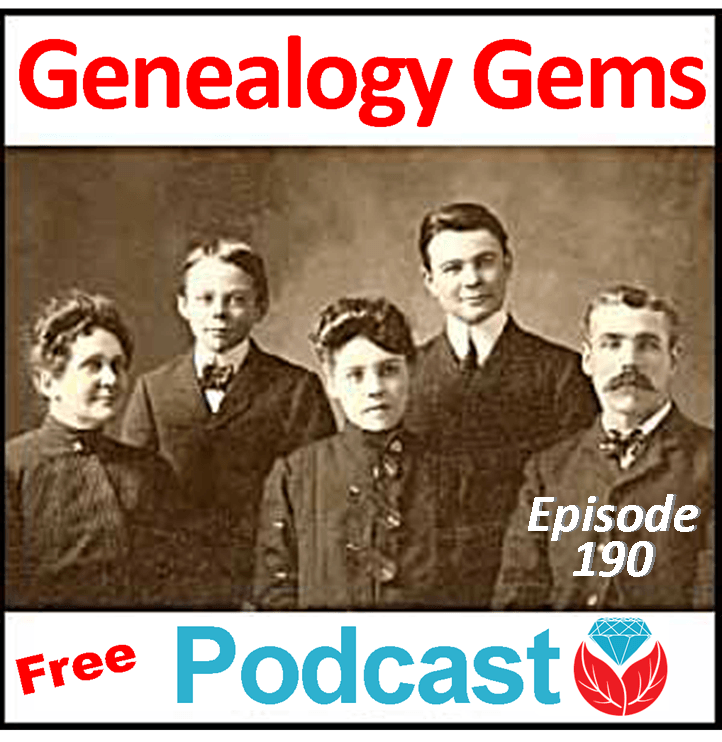 In the just-published, free Genealogy Gems Podcast episode 190, hear from a genealogist who helped lay to rest a 30-year old missing-person’s case–and so much more.
In the just-published, free Genealogy Gems Podcast episode 190, hear from a genealogist who helped lay to rest a 30-year old missing-person’s case–and so much more.
Don’t you love it when everyday heroes help the experts solve baffling mysteries? I especially love it when that hero is a genealogist who wields research skills with deftness, creativity and bulldog tenacity. Has Lisa Louise Cooke got a story for us!
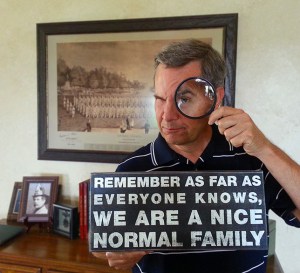
Scott Fisher, Extreme Genes
In the new Genealogy Gems Podcast episode 190, Lisa interviews Extreme Genes radio host Scott Fisher about his now-famous role in helping to solve a 30-year old missing persons case. He’s told this story to People, FoxNews and CBS.com, but here Lisa gets Scott to really lay out the details of how he did it for fellow researchers.
There’s more to love in Genealogy Gems Podcast episode 190, such as:
- Lisa advises a listener on a pesky Gmail problem;
- A whirlwind world tour of new genealogy records online;
- Searching out military service details with Google Books;
- One RootsTech attendee’s Google search success story
- the new Genealogy Gems Book Club title, a brand-new, much-anticipated second novel by a breakout British novelist.
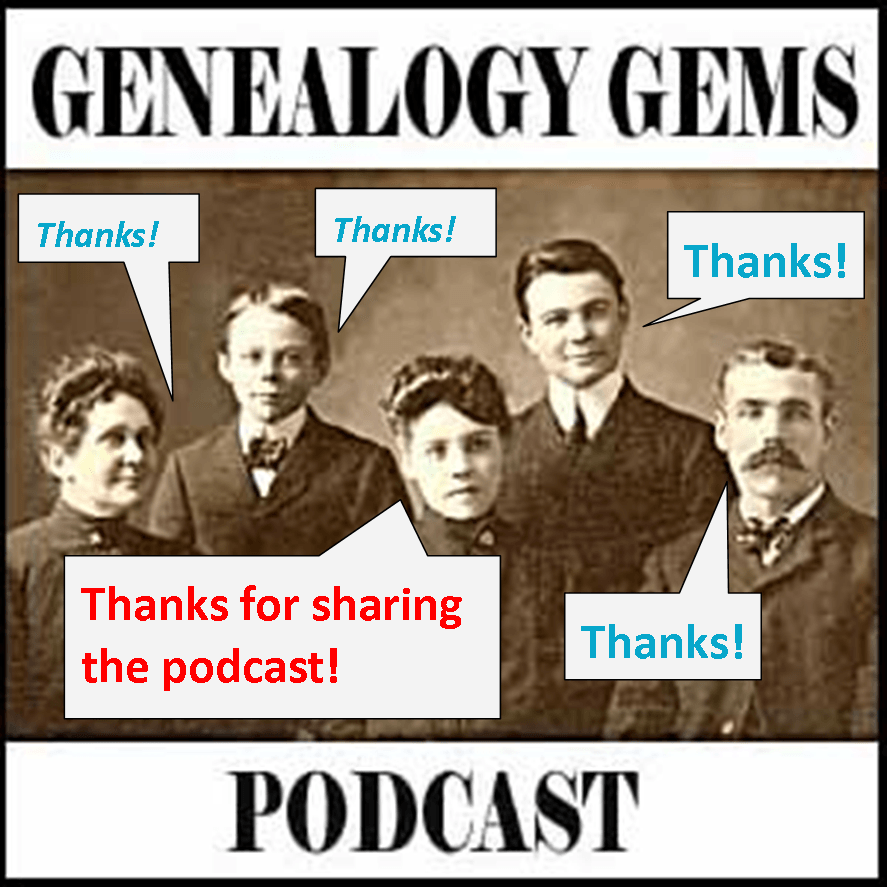 Click here to listen to the episode for FREE (no membership or login required).
Click here to listen to the episode for FREE (no membership or login required).
Not sure what a podcast is or how to listen? Click here to learn more about these “online radio shows” that you can take with you on your mobile device. Listen while you commute, exercise, do your household chores or garden.

by Lisa Cooke | Jul 15, 2013 | 01 What's New, Genealogy Gems Podcast, Technology
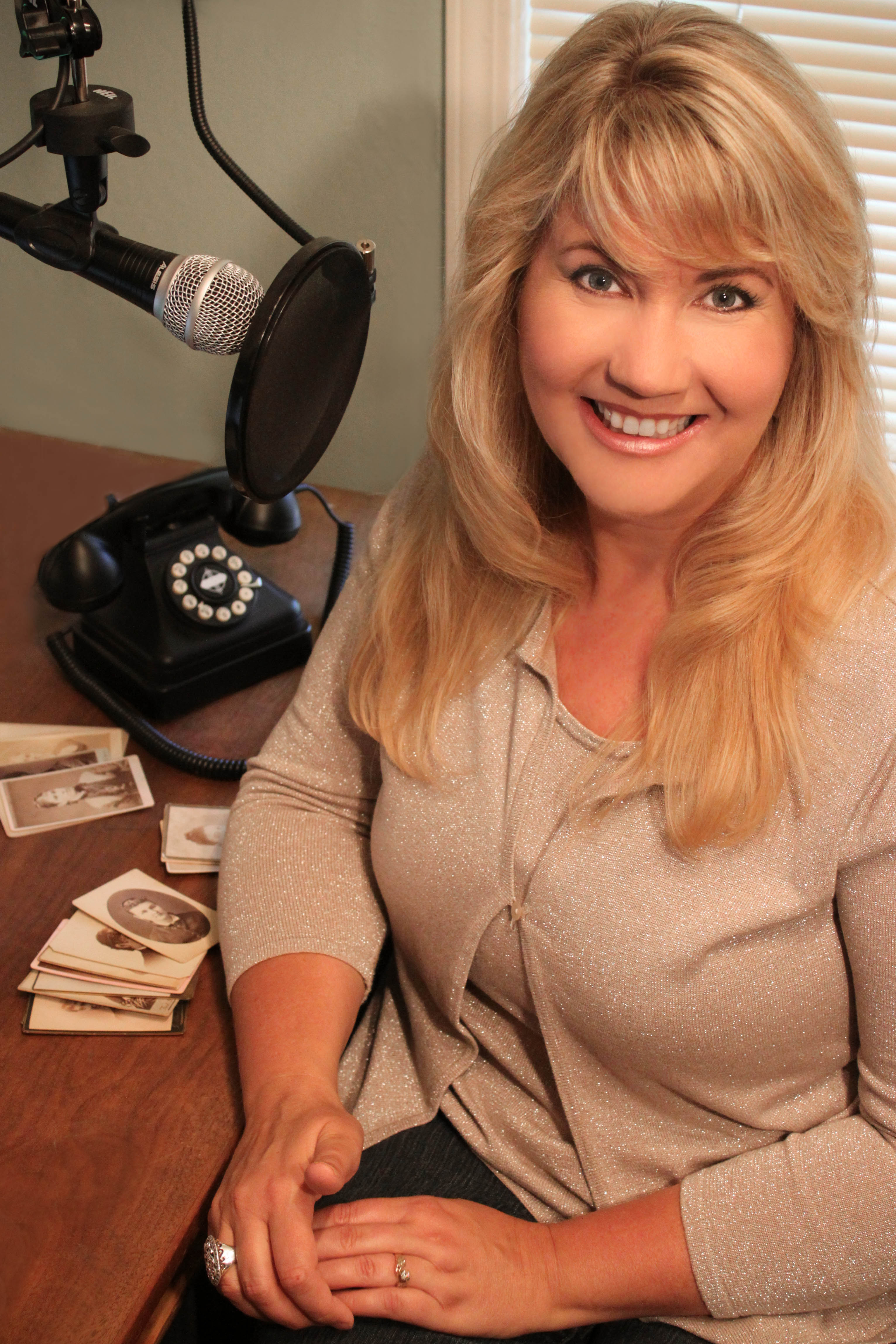 The Genealogy Gems Podcast App is now available for Windows 8 phone, tablets and desktop! Our app provides you the ability to stream or download free Genealogy Gems Podcast content, and even share your favorite episodes. Here’s what you need to know:
The Genealogy Gems Podcast App is now available for Windows 8 phone, tablets and desktop! Our app provides you the ability to stream or download free Genealogy Gems Podcast content, and even share your favorite episodes. Here’s what you need to know:
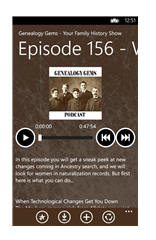 Phone / Tablet: First, download the Genealogy Gems phone app for $2.99 from the Windows Phone Store.
Phone / Tablet: First, download the Genealogy Gems phone app for $2.99 from the Windows Phone Store.
Once installed, a live tile will be available on the start menu. Opening the app will provide you a list of episodes available for the show.
You can swipe left or right to move through favorites, downloaded episodes, and recently played episodes.
Selected episodes will be highlighted with a check mark in the corner. Tapping on an episode you wish to listen to will open an in app player.
Clicking on the three dots in the lower right hand corner will open up the menu shortcuts, giving easy access to marking episodes as favorites, downloading the episodes for offline listening, or sharing the episodes out with your friends.
Desktop. Download the Genealogy Gems desktop app ($2.99 from the Windows Desktop App Store.)
Opening the app will provide you a list of episodes available for the show on the right with a player on the left and utilizes all the standards of the Windows 8 navigation. Selected episodes will be highlighted with a check mark in the corner.
An episode can be bookmarked by marking it as a ‘favorite’, and episodes can be downloaded so that they are available offline.
When downloading a file, the status of the download will appear. Once an episode is favorited or downloaded, you can set the app to show only those favorite episodes or those downloaded files. You can also view a list of what episodes were recently played.
The Genealogy Gems Podcast app is the one and only family history podcast app available, and was named a Must Have Apps for Hobbies by App Advice.
by Lisa Cooke | Mar 13, 2017 | 01 What's New, DNA
Do you need help solving your family migration patterns? A groundbreaking new scientific study uses DNA and family trees to map migration routes across North America.

Family Migration Patterns Revealed in Genomes
A new study published in Nature Communications represents a ground-breaking development in using DNA for genealogy. The article from the AncestryDNA Scientific Team is titled Clustering of 770,000 genomes reveals post-colonial population structure of North America. Or, in more understandable terms, “Your DNA can tell us where you came from in America in the last 500 years.”
Wow, right? So, how did they do this?
The power really is in the numbers. In this particular paper, they started with using their autosomal DNA test on 770,000 people. Some of them were AncestryDNA customers who had consented to be part of the research. From these 770,000, they learned quite a bit about the migration patterns of early Americans. As Ancestry analyzes more individuals using these same principles of correlating genetics and genealogy, this data will improve and be able to tell us even more about our heritage. Even though it takes a large data set to figure out the relationship between our DNA and migration patterns, it really comes down to the relationship of two people.
To start, Ancestry determines how just two people are genetically related. Then, they find how those two are related to a third person, again, looking only at pairs of people. This goes on and on until everyone in the group as been compared. They use a graph to plot those relationships, with those more closely related clustering around each other. And then it happens. The point where we see the marriage of genetics and genealogy suddenly appear by adding in the family history information for each of these individuals in the cluster.
What they found was astounding. They have displayed the data in Figure 3 shown below. It is a map of the United States with colored dots scattered across the landscape. The location of the dots corresponds to the genealogy of those tested, while the color of the dots relates to their genetic clustering. Those who cluster closest together are the same color. The result is a nearly perfect rainbow, with buy anti anxiety medication online uk each color holding its respective spot on the map, with very little overlap between groups.
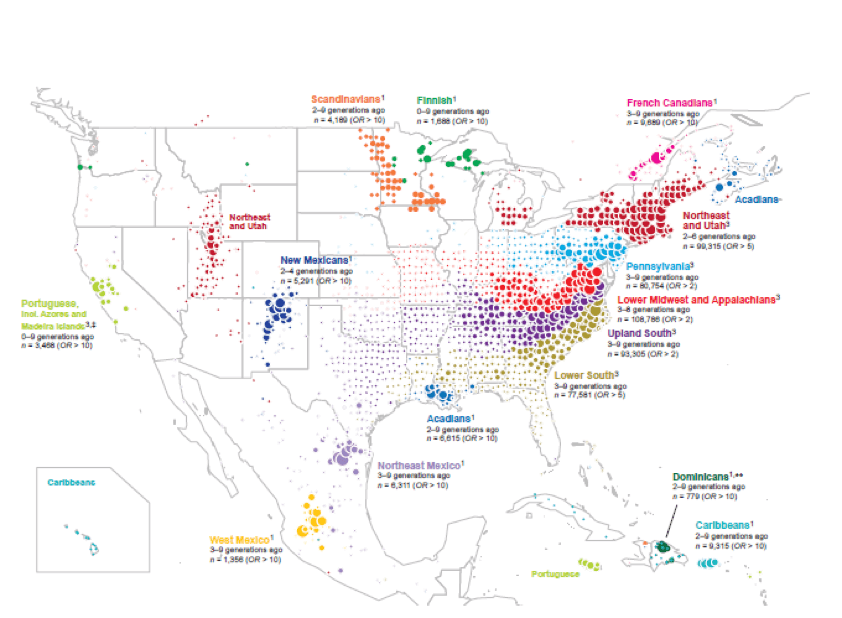
Distribution of ancestral birth locations in North America. Summary map from Nature Communications; click to see article with full explanation of map data. Image used with permission of Ancestry.com.
We might be tempted when looking at the map to think, oh, well, of course there is a large population of European Jews in New York, everyone knows that. But this isn’t their family history, their accent, or their culture telling us this – it is their genetics!
As if that wasn’t exciting enough, the scientists describe how we can trace family migration patterns of different groups over just a few generations. They specifically mention French Canadians and Cajuns/Acadians, but the same principle can theoretically be applied to dozens of other groups.
Family Migration Patterns and Applying these Findings
 So what does this mean for you as a genealogist?
So what does this mean for you as a genealogist?
It means we are getting closer than ever to being able to tell who you are and where you came from using your DNA.
For example, let’s say you have an ancestor in Texas about 4 generations ago, but you aren’t sure where she came from. Your DNA could tell you that you fit into the Lower South group, meaning that your ancestor likely hails from the south. Or, maybe your genetics identify with the Upland South, which means you need to explore records from Arkansas, Tennessee, and North Carolina.
This is just a glimpse into the advances that genetics are bringing to your genealogy toolbox these days. So it’s high time to go “all in” to learn about genetic genealogy! We recommend The Family Tree Guide to DNA Testing and Genetic Genealogy by Blaine Bettinger. You’ll love this book if:
- You’ve got brick walls that traditional research methods haven’t been able to break down
- You want to take advantage of the hottest tool in genealogy
- You’ve already taken a DNA test and want to know what comes next
Disclosure: This article contains affiliate links and Genealogy Gems will be compensated if you make a purchase after clicking on these links (at no additional cost to you). Thank you for supporting Genealogy Gems!
by Lisa Cooke | Nov 5, 2013 | 01 What's New, Military
 There’s a saying that “past is present,” and nowhere is that truth more apparent than family history. Sometimes we get very stark reminders that the same things that affected our ancestors–war, poverty, conflict and the like–affect us today.
There’s a saying that “past is present,” and nowhere is that truth more apparent than family history. Sometimes we get very stark reminders that the same things that affected our ancestors–war, poverty, conflict and the like–affect us today.
Fold 3 has added new databases with “names and related personal and service information for over six thousand men and women who died in Iraq and Afghanistan since 2001.” These databases are:
- Operation Enduring Freedom (OEF) Casualties “Operation Enduring Freedom” (OEF) is the operational codename given by the United States government to the War in Afghanistan which began in 2001 and is currently an ongoing conflict.
- Operation Iraqi Freedom (OIF) Casualties “Operation Iraqi Freedom” (OIF) is the operational codename given by the United States government to the conflict in Iraq from 2003-2010.
- Operation New Dawn (OND) Casualties “Operation New Dawn” (OND) is the operational codename given by the United States government for U.S. involvement in Iraq after Operation Iraqi Freedom ended on August 31, 2010.
According to the press report, “Every casualty links to a Memorial Page with a summary and personal details including full name, branch of service, pay grade and rank, unit, casualty location, date of death, age, residence, and more. In addition to searching for a name, you can also search on other details such as unit number, rank, date of death, or city of residence.”
These databases aren’t just posted here for distant descendants to come learn about their fallen relatives, but for us today to memorialize their lives. Anyone who creates a free Basic Fold3 registration can add to a Memorial Page by clicking the “Add” or “Edit” buttons within any of the sections: Pictures & Records, Personal Details, and Stories. On the final “About” page, you can connect to other pages on Fold3 and describe your relationship to the service member. You can also share these memorial pages with others by email, via a website link, or on Twitter, Facebook, and dozens of other social networking sites.
If you lost someone who is mentioned in these data-sets, here’s an opportunity to take some time to honor them online by adding to their Memorial page.
 In the just-published, free Genealogy Gems Podcast episode 190, hear from a genealogist who helped lay to rest a 30-year old missing-person’s case–and so much more.
In the just-published, free Genealogy Gems Podcast episode 190, hear from a genealogist who helped lay to rest a 30-year old missing-person’s case–and so much more.
 Click here to listen to the episode for FREE (no membership or login required).
Click here to listen to the episode for FREE (no membership or login required).

 The Genealogy Gems Podcast App is now available for Windows 8 phone, tablets and desktop! Our app provides you the ability to stream or download free Genealogy Gems Podcast content, and even share your favorite episodes. Here’s what you need to know:
The Genealogy Gems Podcast App is now available for Windows 8 phone, tablets and desktop! Our app provides you the ability to stream or download free Genealogy Gems Podcast content, and even share your favorite episodes. Here’s what you need to know:


 So what does this mean for you as a genealogist?
So what does this mean for you as a genealogist?